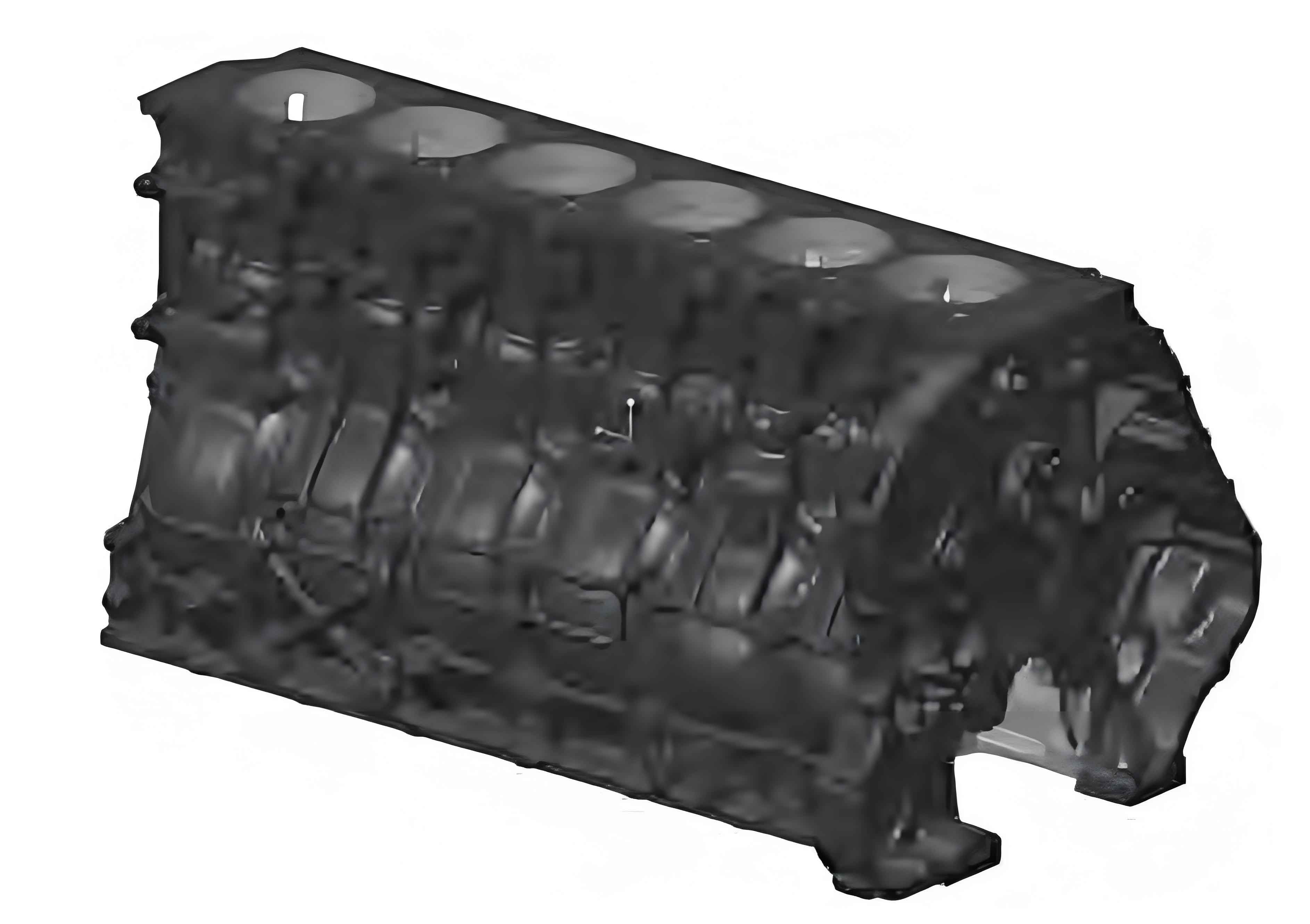The relationship between abnormal piston gas leakage and microstructural defects in engine cylinder blocks has been systematically investigated. This study identifies critical factors affecting graphite morphology in cylinder walls and proposes optimized casting parameters to enhance engine reliability.
1. Mechanism of Gas Leakage in Engine Cylinder Blocks
Gas leakage pathways in combustion engines primarily occur through three interfaces:
- Piston ring-cylinder wall clearance
- Piston ring groove-side clearance
- Piston ring end gap
The leakage flow rate ($Q$) can be modeled using the orifice flow equation:
$$ Q = C_d A \sqrt{\frac{2\Delta P}{\rho}} $$
Where:
$C_d$ = Discharge coefficient (0.6-0.8 for automotive engines)
$A$ = Effective leakage area
$\Delta P$ = Pressure differential between combustion chamber and crankcase
$\rho$ = Gas density

2. Microstructural Analysis of Defective Cylinder Walls
Metallurgical examination revealed critical differences in graphite morphology between normal and defective engine cylinder blocks:
| Parameter | Normal Block | Defective Block |
|---|---|---|
| Graphite Type | Type A (Uniform Flakes) | Type E (Coarse Interconnected) |
| Flake Length (μm) | 50-150 | 200-400 |
| Nodularity (%) | <10 | 25-40 |
The graphite coarsening process follows an Arrhenius-type relationship:
$$ \lambda = \lambda_0 \exp\left(-\frac{Q}{RT}\right) $$
Where:
$\lambda$ = Final graphite size
$\lambda_0$ = Initial nucleation size
$Q$ = Activation energy for graphite growth
$R$ = Universal gas constant
$T$ = Melt temperature
3. Optimization of Casting Parameters
Key process modifications for engine cylinder block production:
| Parameter | Original | Optimized |
|---|---|---|
| Pig Iron Content (%) | 20 | 5 |
| Carbon Equivalent (CE) | 4.1-4.3 | 3.8-4.0 |
| Superheat Temperature (°C) | 1500 | 1550 |
| Holding Time (min) | 15 | 25 |
The modified carbon equivalent calculation:
$$ CE = \%C + 0.3(\%Si + \%P) – 0.03(\%Mn) $$
This adjustment reduced graphite flake length by 58% while maintaining required mechanical properties.
4. Leakage Performance Validation
Comparative testing results for engine cylinder blocks:
| Operating Time (h) | Gas Leakage Rate (L/min) | |
|---|---|---|
| Original | Optimized | |
| 100 | 28.5 ± 1.2 | 24.1 ± 0.8 |
| 300 | 35.7 ± 1.5 | 29.3 ± 1.1 |
| 500 | 47.2 ± 2.1 | 37.6 ± 1.4 |
The leakage growth rate follows the empirical relationship:
$$ \frac{dQ}{dt} = k(T) \cdot \sigma_{wall}^{1.5} $$
Where:
$k(T)$ = Temperature-dependent wear coefficient
$\sigma_{wall}$ = Surface roughness of cylinder wall
5. Engine Performance Improvements
Implementation of optimized engine cylinder block casting parameters yielded:
- 23.8% reduction in maximum gas leakage
- 15.6% decrease in cylinder bore wear rate
- 2.1% improvement in fuel efficiency
- 40% extension in maintenance intervals
The wear resistance enhancement can be expressed as:
$$ WR = \frac{H_{matrix}^{1.2}}{V_{graphite}^{0.5}} $$
Where:
$WR$ = Wear resistance index
$H_{matrix}$ = Matrix hardness (HV)
$V_{graphite}$ = Graphite volume fraction
6. Conclusion
This study demonstrates that controlled refinement of graphite morphology in engine cylinder blocks significantly improves combustion sealing performance. The developed process optimization framework enables:
- Precise control of graphite nucleation and growth
- Enhanced mechanical properties of cylinder walls
- Sustainable production through material efficiency improvements
Further research directions include developing real-time microstructure monitoring systems for engine cylinder block casting processes and investigating nanocomposite surface treatments for ultra-low leakage applications.
